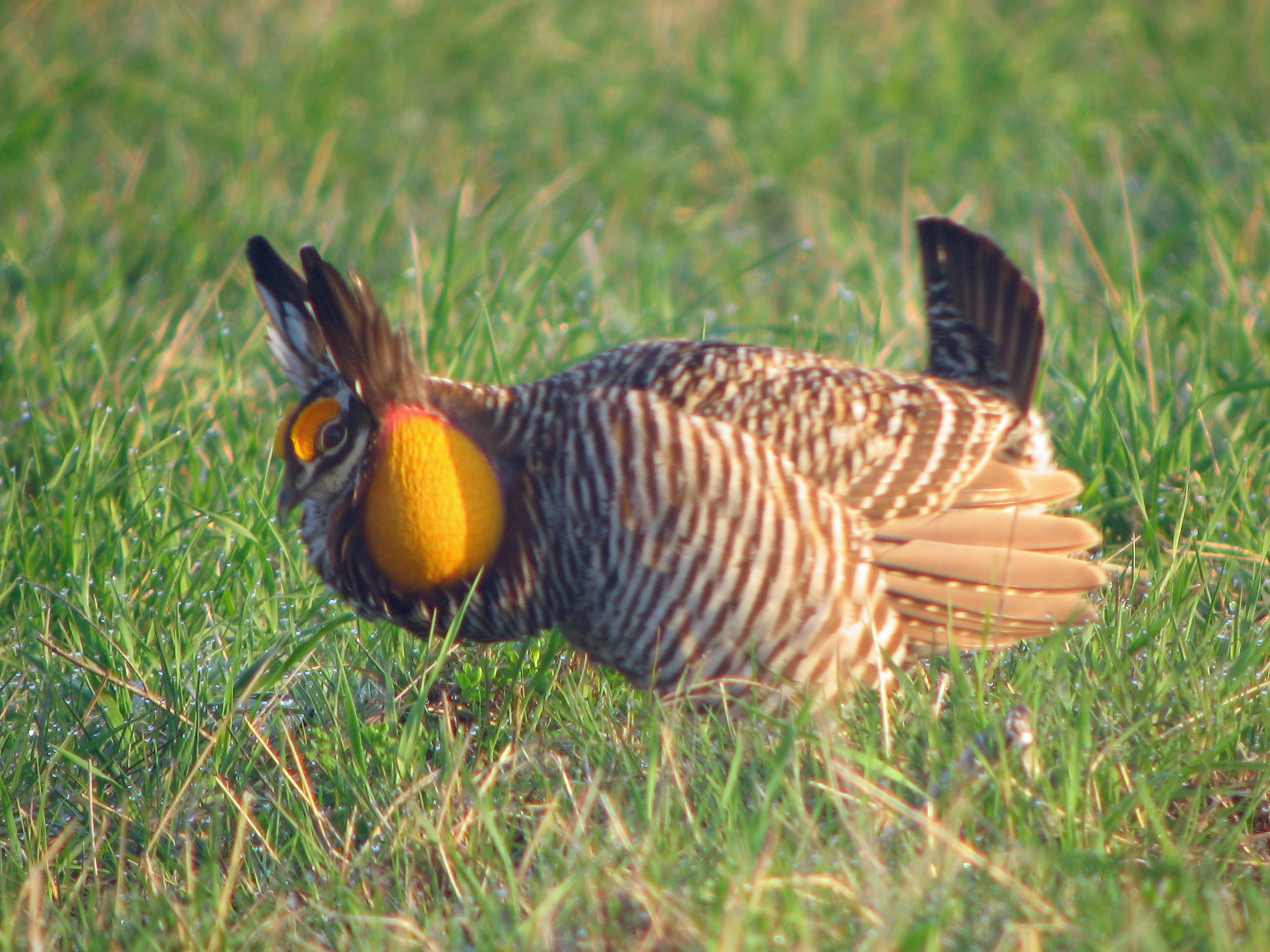There’s a place in southwest Iowa where a most unusual display occurs each year between March and May. It’s the mating dance of the greater prairie chicken (AKA pinnated grouse (Tympanuchus cupido). Rather than pair-bonding like many birds do, prairie chickens have a lek form of mating. The females choose who to breed with, and once the deed is done, the females handle all the responsibilities for the chicks. Multiple females will breed with the same male if they determine that he’s the best option. To accomplish this selection process, the males have to prove themselves to the females.
To do this, the males select a place in the prairie which is flat and elevated called a lek or booming ground. Each one claims and defends a piece of the booming grounds.
When the females arrive at the booming grounds, the males begin their dance, stomping their feet, raising their neck feathers, fluttering their wings, and booming by inflating orange air sacs on their neck and using them to vocalize. The females will choose their mate based on his long legs, large eye cones, and best territory near the center of the booming grounds. There’s no pair bonding here, and usually only a few of the oldest, most experienced males will get all the females.
These chicken-like birds once claimed all of Iowa as their native habitat. The prairies were excellent hunting grounds for all kinds of insects, seeds, grains and leaves. The brushy patches of woodlands made good nesting and hiding places to shelter from predators. The hen would make a nest in the brush, hidden from view. There she would lay from 5 to17 eggs which she would incubate and hatch. Then she would mother the chicks, teaching life skills, like how to forage in the grass and how to avoid predators.
Two changes in the prairie chicken’s world led to their total extirpation in Iowa by the end of the 19th century. First was the destruction of their habitat. As the prairies were converted to cropland, the greater prairie chickens had fewer and fewer regions of open prairie. In 1880, when the greater prairie chicken population was at its peak, 69% of Iowa had been converted to farmland. Twenty years later, cropland covered 90% of Iowa, and prairie chickens were in significant decline. They did not thrive in cornfields.
The second big change was the onslaught of market hunters. They came with their guns and hunted the greater prairie chickens mercilessly. They might take from 50 to 200 birds in a day which they put in barrels and shipped by train to markets in the east. Settlers also hunted these birds because they were good to eat, and their eggs added to the settlers’ diets.
Efforts to restore greater prairie chicken populations in Iowa have been somewhat successful with birds imported from Nebraska, Kansas and Missouri.
Today, their numbers are small, with the Iowa DNR and neighboring states working hard to preserve a place for them in southwest Iowa near Kellerton. In spite of their designation as endangered, they can still be hunted in neighboring states since they are not covered by the Migratory Bird Act. The Iowa Legislature passed laws curtailing hunting the prairie chicken in 1915, but by then there weren’t many left.
Prairie chickens have been gone from Owl Acres since the 1850s, but they undoubtedly walked this land for centuries before it was settled. Every year around this time I remember the prairie chickens and vow that someday we’ll go and hear them doing their dances in person. Maybe next year?
Photo from Wikimedia.org by GregTheBusker. Alt text: A male Prairie Chicken displays at a lek. Tightly spaced brown and white stripes mark his wings and stout body. Large orange air sacs inflated to the shape and size of a hen’s egg stand out on both sides of his neck. Two tall feather tufts are erect over the top of his head, looking like rabbit ears. His short fan-shaped tail points straight up. Long ago pushed off Owl Acres, this Prairie Chicken was photographed in Illinois.
